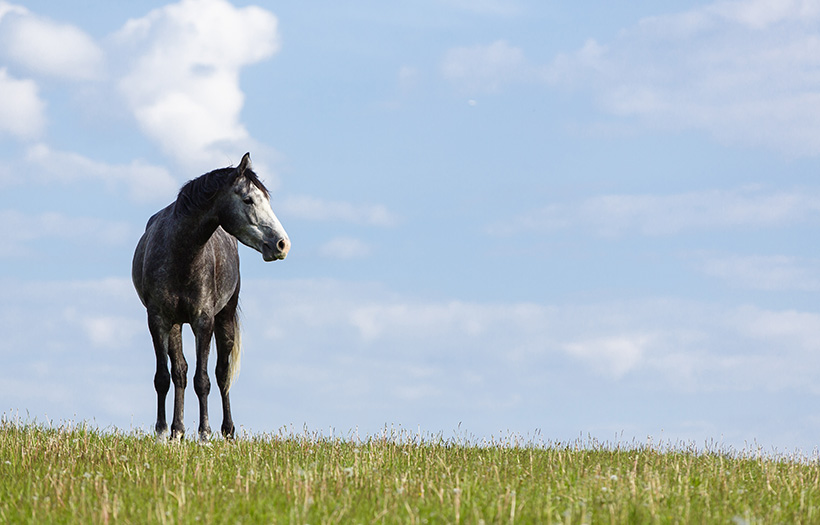Nutrena Nutrition Tips: Feeding Horses During Reduced Work

Learn our top tips for feeding your horse during reduced work. Tiffany Pattison, a consultant for Nutrena, shares valuable insights and recommendations for modifying your horse’s nutrition plan to maintain optimal health and performance during periods of reduced activity.
Understanding Workload Changes
There are various situations that can lead to changes in your horse’s workload. If you show seasonally, your horse might experience periods of intense work during competition time and more relaxed schedules during the off-season. Trail riders, however, tend to ride harder in the spring, summer, and fall months, but take a break when the winter weather turns unfavorable. And of course, there is the unfortunate scenario of injury resulting in stall rest or limited turnout. By recognizing these factors, we can better prepare ourselves for adjusting our horses’ diets accordingly.
Selecting the Right Feed
When it comes to feeding, hay is the cornerstone of your horse’s nutrition. Always remember its significance and consult with a nutritionist for guidance if you have concerns. There are several different feed options available for your horse when their workload is reduced. There are high-fat pellets, textured feeds, and standard pellets, each with its own unique characteristics. It’s crucial to choose the feed type that aligns with your horse’s preferences and specific needs.
Weighing Your Horse’s Feed Accurately
Accurate measurement of feed is key to providing the right amount of nutrition to your horse. We all have our own ways of measuring, whether it’s a scoop, cup, or coffee can. However, it’s essential to establish precise measurements to ensure consistency. That’s where tools like a scoop scale or even a shipping scale can come in handy. Alternatively, you can weigh your horse’s feed in a ziplock bag to determine the exact amount. Remember, precise measurements lead to precise nutrition!
Adapting the Diet for Horses with Reduced Workload
It is a common misconception that you should significantly reduce feedings when your horse experiences stall rest or reduced work. That’s just not the way to go! Instead, adjust the feed quantities based on your horse’s activity level. Refer to the feeding instructions on the feed tags, which usually indicate recommended amounts for maintenance or light work. By following these guidelines, you’ll ensure your horse receives the necessary nutrition without unnecessary weight gain.
Exploring the Role of Diet Balancers
Enter diet balancers, the superheroes of horse nutrition during periods of reduced workload. These highly concentrated and balanced feed options, such as Nutrena’s Empower Topline Balance, provide all the essential nutrients your horse needs without adding excessive calories. Diet balancers are especially beneficial for horses on stall rest or light work, helping maintain their hair coat, hoof condition, and muscle strength. By incorporating a diet balancer into your horse’s feeding routine, you’ll keep them in tip-top shape, even when exercise is limited.
By understanding your horse’s changing workload, selecting the right feed, measuring accurately, and incorporating diet balancers when necessary, you can ensure your equine companion receives the optimal nutrition throughout every stage. Remember, a well-fed horse is a happy and healthy horse.
Ready to ensure your horse is getting the optimum nutrition at feeding time, every time? Find the perfect feed formulated specifically for horse’s needs with our Feed Selector Tool.
